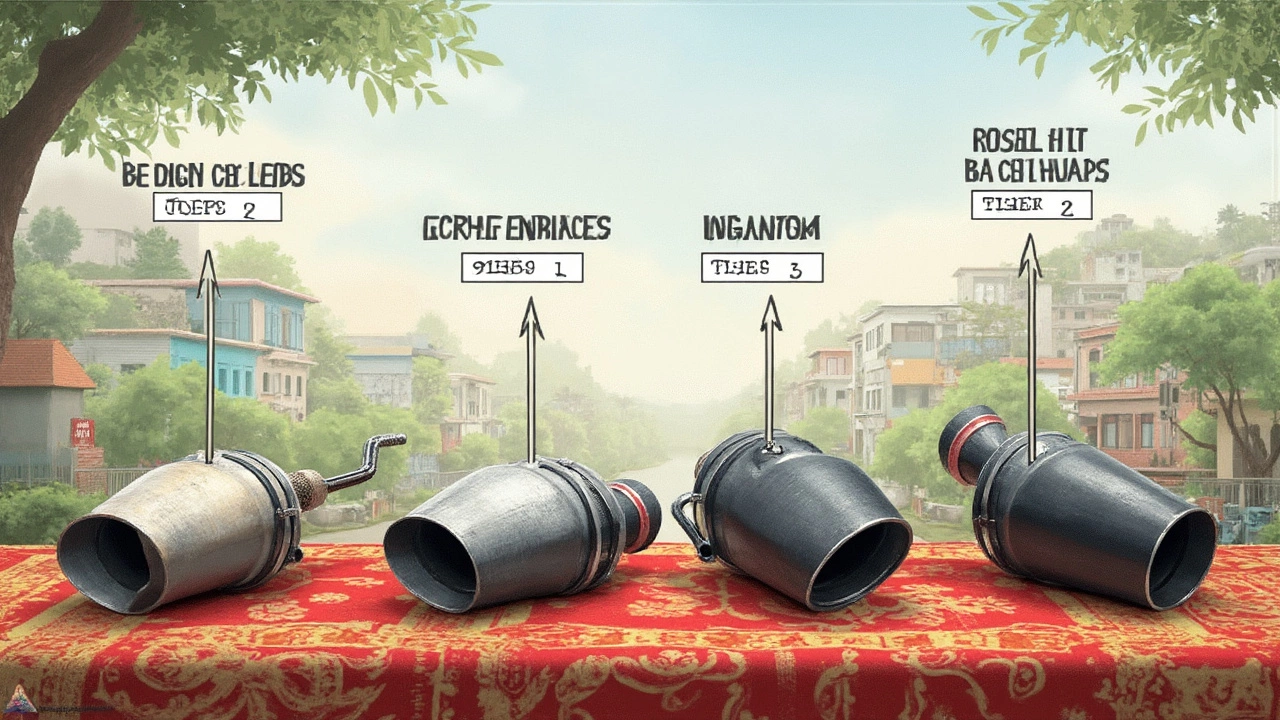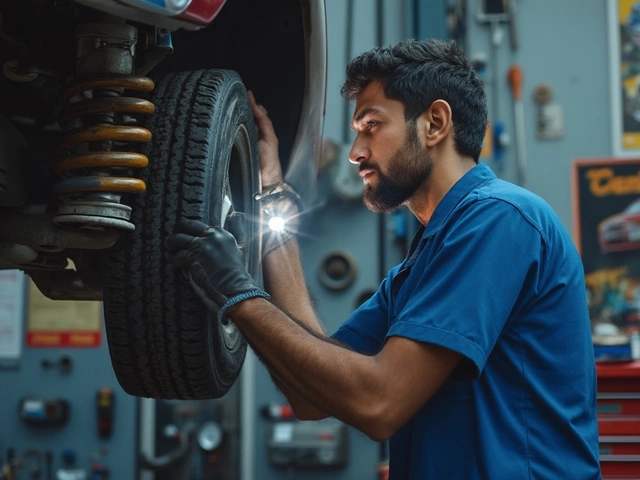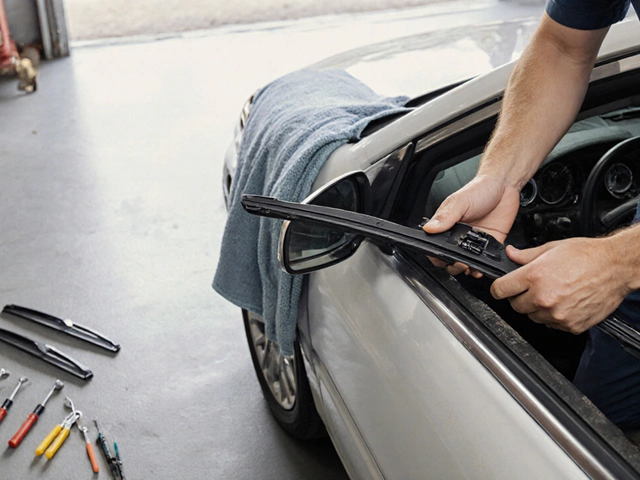Standing in the auto parts store, there are endless exhaust options staring right at you. It's easy to get caught up in the hype about noise or horsepower. But the first thing you need to know? The exhaust isn't just making your car louder—it's controlling airflow, emissions, and yes, how your car feels to drive.
If you want that deep growl, upgrade for better mileage, or just want something that won't get you a ticket, it pays to know exactly what kind of exhaust you're buying. Some are all about performance, some are just there for looks, and others will make your neighbors hate you. Your decision should match how you actually use your car daily. Skip the guesswork, ignore the sales talk—let's break down what's worth your money and what you can ignore.
- Exhaust Basics: What It Really Does
- Popular Styles: Axle-Back, Cat-Back, and More
- Performance Myths vs. Real Benefits
- Sound, Style, and Street Laws
- Tips on Buying, Installing, and Living With Your Choice
Exhaust Basics: What It Really Does
The car exhaust isn't just a fancy pipe out the back—it’s a whole system doing a bunch of jobs at once. First off, it’s there to carry out all the burnt gases from your engine. Cars burn fuel for power, and that creates gas that’s gotta go somewhere. Without an exhaust system, your car would sound like a lawnmower cranked up to 11 and fill the air with nasty, unfiltered fumes.
The main parts of a car exhaust system are:
- The exhaust manifold (hooks up to the engine and collects gases)
- Catalytic converter (this is the big one that cuts down on pollution)
- Resonator (some cars have this to fine-tune the sound)
- Muffler (literally muffles the noise)
- Pipes (move gases out the back)
The exhaust system matters for performance too. A well-designed setup clears out gases faster and smoother, so your engine "breathes" better. That can mean a little more power or better fuel efficiency, depending on the design. Cheap or worn-down exhausts can choke the system—your car feels sluggish and sounds rough.
Modern exhausts are tightly linked to emission rules. The catalytic converter especially has gotten serious upgrades in the last 20 years. According to the EPA, today’s cars put out more than 90% less tailpipe pollution than cars from the early 1970s. That’s mostly thanks to better exhaust design.
| Part | Main Job |
|---|---|
| Manifold | Collects engine gases |
| Catalytic Converter | Reduces toxic emissions |
| Resonator | Tweaks exhaust tone |
| Muffler | Quiets the sound |
| Pipes | Directs flow outside |
So when you ask about swapping out your exhaust, you’re not just picking a sound or a look. You’re picking how your exhaust system tackles noise, efficiency, and staying legal. Understanding these basics makes it way easier to sort out what you actually want for your car.
Popular Styles: Axle-Back, Cat-Back, and More
You’ll probably hear a lot about axle-back and cat-back systems when you start shopping for a car exhaust. Here’s what matters: axle-back systems replace the pipes and mufflers from the rear axle back, while cat-back kits cover everything from the catalytic converter all the way to the tips. The difference isn’t just about length—cat-back systems usually give a bigger bump in sound and power, since they open up more of the flow. Axle-backs are easier to install and usually cost less, making them a go-to for folks who just want a new tone or look.
If you care mostly about looks or a subtle sound upgrade, axle-backs are enough. But if you're chasing more performance—think a small but noticeable bump in horsepower and throttle response—cat-backs are where it’s at. Just know that neither of these will magically add 50 horsepower to your daily driver. Expect more like 2-5% gains, mostly with cat-backs, and sometimes less if your car isn't tuned for upgrades.
There's also the option of a full header-back system, swapping everything from the headers down. That's more cash and usually not needed unless you're seriously modding an engine. One tip: if you drive a turbo car, look into a "turbo-back" exhaust. It’s a full setup behind the turbo and can really change the game for boost and volume.
- Axle-Back: Cheapest, quick swap, mostly for sound/style.
- Cat-Back: Better airflow, more aggressive sound, slight power bump.
- Header-Back: Full change, max performance, pricier install.
- Turboback: For turbos only, huge impact but costs the most.
Here’s a quick comparison that breaks it down:
| Type | Average Cost | Performance Gain | Difficulty |
|---|---|---|---|
| Axle-Back | $250-$600 | Minimal | Easy |
| Cat-Back | $400-$1,200 | 2-5% | Moderate |
| Header-Back | $900-$2,500 | Up to 10% | Hard |
| Turbo-Back | $900-$2,000 | Up to 12% | Hard |
One last tip? Check your state’s laws before you buy. Some systems are too loud or mess with emissions and could land you a fine, especially in states like California where exhaust system rules are strict. Always double-check what’s actually street legal for your ride.

Performance Myths vs. Real Benefits
Lots of people think swapping out your stock car exhaust means your car will instantly get a massive horsepower boost, sound like a race car, and even save you gas money. Truth is, what you really get depends on what type of system you choose, your engine, and how you drive.
Let's bust some common myths about exhaust systems and get to what actually happens when you upgrade:
- Myth: Any aftermarket exhaust will make your car way faster. Reality? Most modern cars are already pretty efficient. If you slap on a cat-back or axle-back system, you might only see a small jump—think 2-5% more horsepower, and sometimes not even that. A full system with high-flow headers, downpipes, and matching parts on a turbo car can give more, but it’s not magic.
- Myth: Louder means more power. Not true. You can have a noisy exhaust that’s actually hurting performance because it ruins back pressure or just sounds sloppy. Some quiet, well-designed systems add more power than cheap loud ones.
- Myth: Exhaust upgrades always help with gas mileage. In most cases, the difference is tiny, if anything. Sometimes you get worse mileage because you enjoy the sound and drive harder!
- Myth: Bigger pipes are always better. Too large of a pipe and your car can lose low-end torque, making city driving worse. Pipe sizing has to fit your engine—you can't just go huge and expect good results everywhere.
So what are the real benefits you can expect from a quality exhaust system upgrade?
- Better sound: You control if you want a subtle tone or full-on growl. This is often the main perk for lots of drivers.
- Longer lifespan: Stainless steel systems can outlast stock setups, especially if you drive where roads get salty or wet.
- Weight savings: Some aftermarket exhausts are lighter than factory setups— less weight can help handling, especially on sporty cars.
- Look: You get to pick tips and styles that fit your vibe, which is cool if you want your ride to stand out.
Here's a quick look at what you might get in actual numbers:
| Exhaust Type | Estimated HP Gain | Usual Weight Difference |
|---|---|---|
| Axle-Back | 0-2 HP | 0-5 lbs less |
| Cat-Back | 2-7 HP | 5-15 lbs less |
| Full System (including headers) | 5-20+ HP (turbo engines can get more) | 10-25 lbs less |
So, when folks brag about crazy performance gains just from swapping the exhaust, they're probably exaggerating. It's mostly about the right sound, maybe a tiny bit more power, and how you want your car to feel every day. Just remember to choose the system that matches your car and your life, not just the wildest claims you hear online.
Sound, Style, and Street Laws
Swapping out your car exhaust usually starts with wanting a new sound or a cooler look. Maybe you want your engine to snap, crackle, and pop—or maybe you just want something that looks less rusty. Either way, it’s way more than picking the loudest pipe off the shelf. Your choices have real impacts, and plenty of street laws to think about.
Let’s tackle sound first. When it comes to exhaust noise, each state and city has its own noise limits. A “legal” setup in Texas could get you a ticket in California. Most U.S. states limit maximum sound levels to somewhere between 80 and 95 decibels (dB) measured from a certain distance. For example, California set a hard cap at 95 dB for most vehicles. Cops do have decibel meters and, yes, they use them—especially in car-crazy areas.
| Location | Max Sound Level (dB) |
|---|---|
| California | 95 |
| New York | 95 |
| Florida | 90 |
| Texas | 86-90 (varies) |
Then there’s style. Aftermarket exhaust systems come in all shapes: single tips, dual tips, polished chrome, even colors. Some folks love aggressive “blast-pipe” looks, while others stick with subtle. Just keep in mind, huge tips don’t boost power—they’re usually about appearance or sound direction. Make sure any new pipes clear your bumper and don’t risk melting plastic or burning someone’s ankles at a parking lot meet.
If you daily your car or have kids like my Finneas in the backseat, don’t ignore interior drone—the annoying buzzing at certain RPMs. Big straight pipes sound cool out back, but they can make road trips miserable. Resonators and mufflers aren’t just there for the law; they protect your ears too.
Laws aren’t just about noise. Some places also check if your car has the full set of emissions equipment, like catalytic converters. Removing or tampering with these is illegal in every state if your car originally had them. You risk fines and failing inspection—even if your new pipe looks factory-made.
- Check your local sound rules before buying—and ask shops if their systems are certified.
- Pick looks that match your car’s shape for a cleaner fit and easier install.
- If you’re worried about noise, look for systems with a removable silencer or extra muffler choices.
- Always keep all legal emissions gear in place if you drive on public roads.
Bottom line: Getting the right exhaust system means more than just picking a big shiny tip. Consider noise, style, and most importantly, whether it’s actually legal where you live. Nothing ruins a new setup like a fat ticket or a failed inspection sticker.

Tips on Buying, Installing, and Living With Your Choice
Choosing the right car exhaust isn't just a mood thing—it's a mix of research, real talk, and planning for life after the install. Let’s make sure you don’t waste cash or regret the change later.
Buying: Always check if the exhaust system you want is legal in your area. California, for example, has some strict noise and emissions rules. You don’t want to fork out for a system only to fail a smog test or get an annoying ticket. Look up the exact model and read reviews from actual owners, not just what brand websites say.
If you’re hunting for performance, look at what it does for horsepower and torque, not just sound. Stainless steel costs more than mild steel but survives winter salt and moisture way longer. Aluminized exhausts give you a good balance if rust isn’t a big issue where you live.
Here’s a quick breakdown to keep in mind:
| Material | Pros | Cons |
|---|---|---|
| Mild Steel | Cheap, easy to weld | Rusts fast |
| Aluminized Steel | Affordable, better against rust | Coating can chip |
| Stainless Steel | Resists corrosion, lasts long | Expensive |
Installing: If you have tools and some basic car knowledge, lots of axle-back or cat-back kits are pretty DIY-friendly. But a warning from experience: rusty bolts suck. Spray them with penetrating oil ahead of time. Always measure before buying—there’s nothing worse than a system that doesn’t fit your car. Most bolt-on kits come with detailed instructions, but be prepared to jack up your ride safely and maybe grab a friend for help.
Here’s a simple install checklist:
- Check that you have the right exhaust for your exact make, model, and year
- Read the instructions twice before you touch anything
- Soak old bolts ahead of time
- Double-check gasket seals and clamps
- Make sure nothing rubs or bangs once it’s on (test drive!)
Living With Your Choice: Now comes the reality check. A loud exhaust might sound awesome the first week, but if you commute at 6am or have neighbors close by, you might regret going full race mode. I heard from a mechanic at a local shop near me, "Folks often come back for something quieter once they’ve lived with the drone on the highway."
"The right exhaust isn’t always the noisiest, it’s the one you can live with every day," – Matt Graves, auto technician with 20+ years in exhaust systems.
Also, keep in mind some aftermarket systems can actually boost your fuel economy a bit if they’re less restrictive. On the other hand, if you just go for sound and ignore backpressure, you could lose power or MPG.
Finally, save your old exhaust. You never know when you’ll need it down the road, especially if you sell your car or have to pass an inspection. And get into the habit of checking the hangers and bolts yearly—nothing lasts forever under there.




